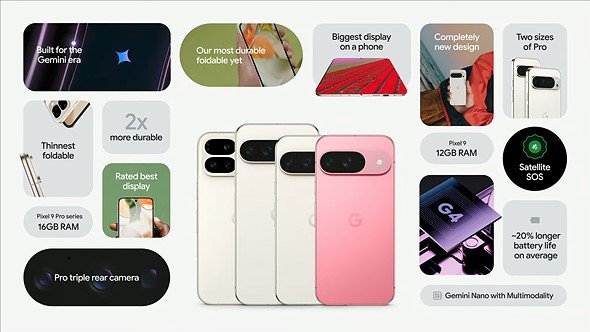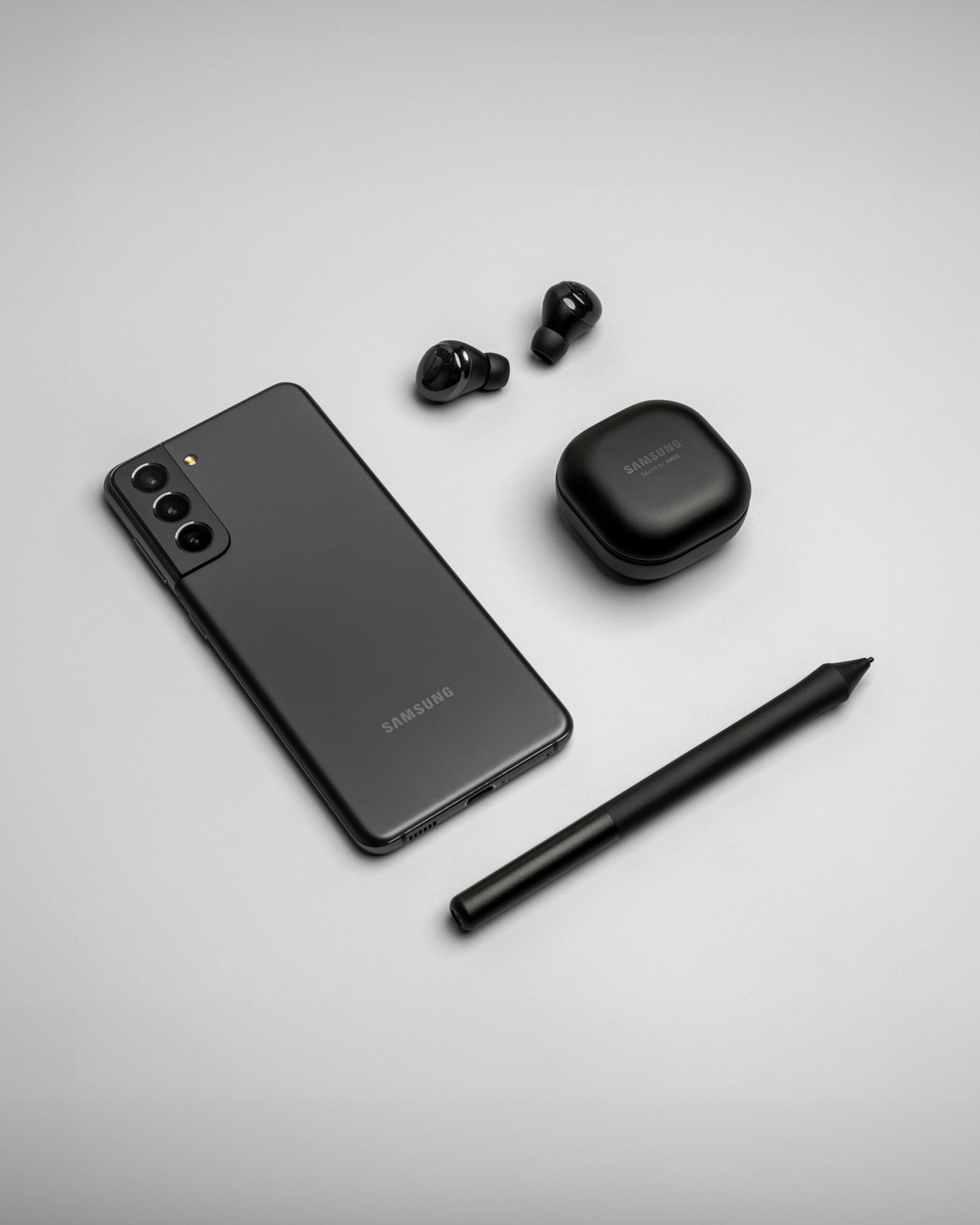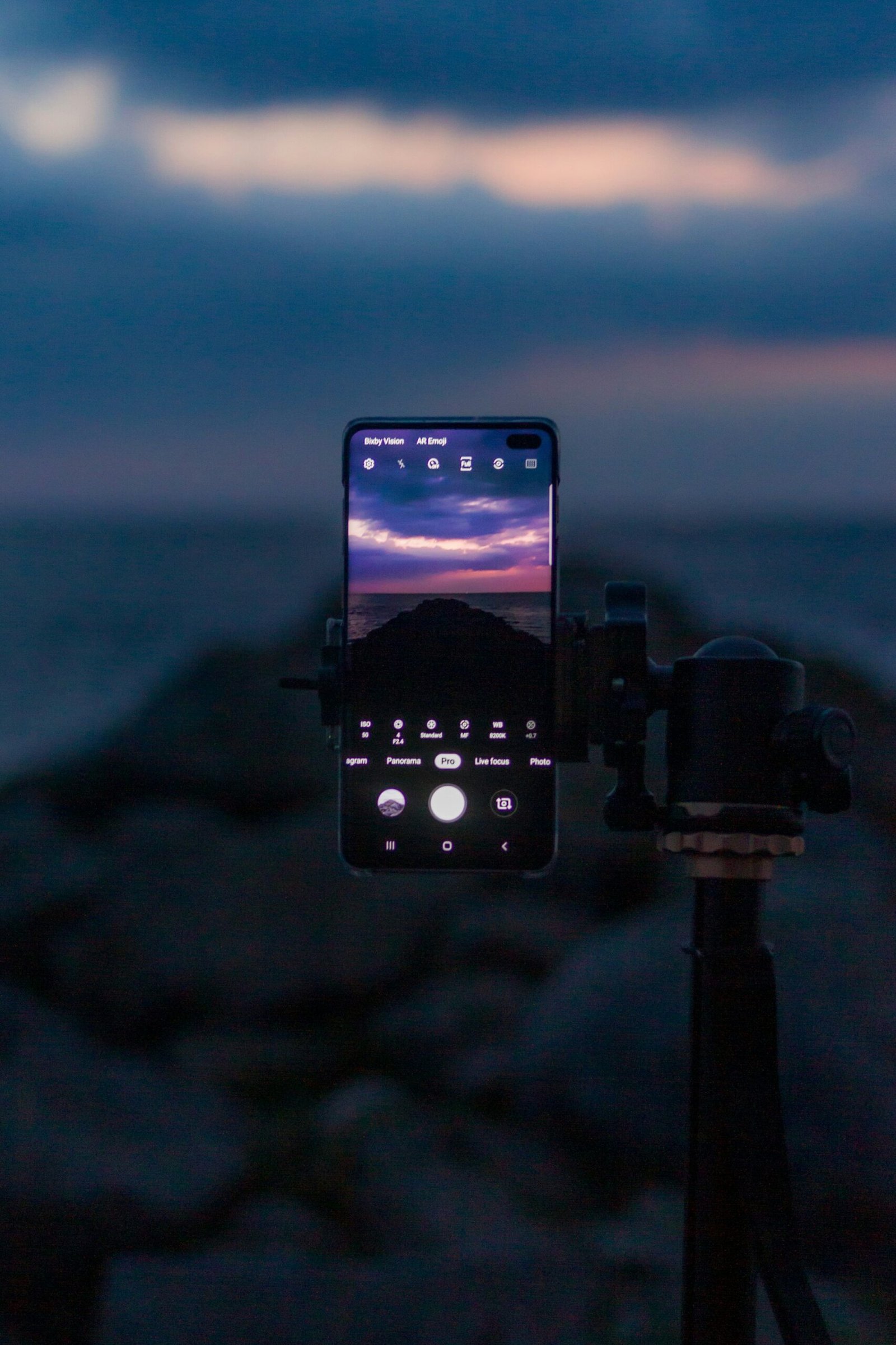Don't miss our holiday offer - 20% OFF!
Google Pixel 9 and Pixel 9 Pro Cameras Compared: Which One is Right for Your Photography?

Introduction to Google Pixel 9 and Pixel 9 Pro Cameras
The Google Pixel series has consistently pushed the boundaries of smartphone photography, and the release of the Pixel 9 and Pixel 9 Pro continues this tradition. These models are particularly noteworthy for their cutting-edge camera technologies, which cater to both casual users and professional photographers. With the Pixel 9 and Pixel 9 Pro, Google aims to solidify its position in the competitive smartphone camera market, offering features that stand out in a crowded field.
One of the key aspects that set the Pixel 9 and Pixel 9 Pro apart is their advanced computational photography capabilities. Google’s proprietary software algorithms work in tandem with the hardware to produce stunning images even in challenging lighting conditions. The Pixel 9 includes features like enhanced Night Sight, which offers improved low-light performance, and the new Magic Eraser tool, which allows users to remove unwanted objects from their photos effortlessly.
For photographers interested in more granular control over their shots, the Pixel 9 Pro takes things a step further. It boasts a versatile triple-lens setup, featuring a wide-angle, ultra-wide-angle, and telephoto lens. This configuration provides a wider array of shooting options, from expansive landscapes to detailed close-ups. Coupled with the Pro mode, where users can manually adjust settings such as ISO and shutter speed, the Pixel 9 Pro is tailored for those who demand more from their smartphone cameras.
Both models are equipped with powerful sensors and leverage Google’s expertise in machine learning to deliver superior photo quality across various scenarios. Whether you’re capturing fast-moving action or a serene sunset, the Pixel 9 and Pixel 9 Pro are designed to meet the needs of discerning photographers. With these devices, Google aims to offer not just incremental upgrades but also innovative features that significantly enhance the photography experience.
Core Camera Specs and Features
The Google Pixel 9 and Pixel 9 Pro bring a host of noteworthy innovations and refinements to the realm of smartphone photography. At the heart of both devices are significant advancements in camera technology, promising to elevate the user experience with every shot captured.
Starting with the main cameras, the Pixel 9 is equipped with a 50-megapixel wide sensor, accompanied by a 12-megapixel ultrawide lens. This setup provides versatility for everyday photography, ensuring high-resolution images with a wide field of view. It features a wide aperture size of f/1.8 for the main sensor, optimizing performance in low-light conditions by allowing more light to hit the sensor.
In contrast, the Pixel 9 Pro takes it up a notch, boasting a sophisticated triple camera array. It includes a 50-megapixel wide sensor, a 12-megapixel ultrawide lens, and an additional 48-megapixel telephoto lens with up to 5x optical zoom. This trio of cameras on the Pixel 9 Pro offers greater flexibility for photographers who demand more from their devices, enabling superior close-up shots without compromising image quality. The main sensor also maintains an aperture of f/1.8, ensuring excellent low-light performance.
Innovation is evident across both models with features like the new AI-driven computational photography enhancements. Both smartphones are equipped with improved HDR capabilities, enhanced night mode, and Google’s cutting-edge image processing algorithms, ensuring that photos are vibrant, detailed, and true to life, regardless of lighting conditions.
Another shared feature is the upgraded video capabilities. Both the Pixel 9 and Pixel 9 Pro support 8K video recording, stabilization features, and a suite of video editing tools directly within the native camera app, making it effortless to capture and edit professional-grade video content on the go.
From a technical standpoint, the Google Pixel 9 and Pixel 9 Pro each present compelling features tailored to different user needs. Whether you seek the simplicity of a robust dual-camera system or the versatility of a triple-lens configuration, both models ensure top-notch performance bolstered by Google’s innovative camera technology.
Image Quality and Performance
When comparing the image quality between the Google Pixel 9 and Pixel 9 Pro, several factors come into play, including performance in varying lighting conditions and the accuracy of colors. Under daylight settings, both the Pixel 9 and Pixel 9 Pro deliver impressive results. Images are imbued with vibrant colors and maintain sharpness across the frame. The dynamic range is robust, allowing for the capture of intricate details in both the highlights and shadows.
In low light conditions, however, the differences become more pronounced. The Pixel 9 Pro, equipped with advanced sensors and algorithms, excels in reducing noise and preserving detail. It manages to produce clearer and more vibrant images compared to the Pixel 9, which, while impressive in its own right, can struggle slightly more with noise levels and detail retention in such challenging scenarios.
High contrast environments present their own set of challenges, yet both models perform admirably. The Pixel 9 Pro’s superior dynamic range shines through, effectively balancing the extremes of light and dark areas in a scene. Meanwhile, the Pixel 9 handles high contrast well but occasionally falls short in rendering finer details under harsh lighting.
Color accuracy is another critical factor in the evaluation. The Pixel 9 Pro tends to deliver colors that are closer to real life, benefiting from its enhanced processing capabilities. The Pixel 9 offers accurate colors as well but sometimes leans towards a warmer tone. When it comes to sharpness, both cameras are comparable, capturing fine details with precision, though the Pixel 9 Pro edges out slightly due to its superior lens and sensor technology.
Regarding different photography modes, the Pixel 9 Pro again demonstrates its prowess. In portrait mode, it offers better subject-background separation and a more natural bokeh effect. Night mode sees the Pixel 9 Pro producing brighter images with lesser noise and more detail retention compared to the Pixel 9.
Video Capabilities
The Google Pixel 9 and Pixel 9 Pro offer impressive video recording capabilities, making them both strong contenders in the realm of smartphone videography. Each device brings unique features and enhancements that cater to both casual users and professional content creators.
Starting with the Google Pixel 9, it supports video resolutions up to 4K at 60 frames per second (fps), which is a significant improvement over its predecessor. This elevated resolution, combined with the option to shoot at a high frame rate, allows for capturing detailed and smooth footage. Additionally, the Pixel 9 includes advanced video stabilization technology, known as Optical Image Stabilization (OIS) and Electronic Image Stabilization (EIS). These stabilization systems work conjointly to minimize camera shake and deliver steady, fluid videos, even in dynamic shooting environments.
On the other hand, the Google Pixel 9 Pro pushes the boundaries further by offering 8K video recording at 30 fps, providing an incredibly high resolution that is ideal for professional videographers aiming for ultra-high-definition content. Furthermore, the Pixel 9 Pro also supports 4K recording at 120 fps, which opens up the potential for high-quality slow-motion videos. Similar to its counterpart, the Pixel 9 Pro is equipped with both OIS and EIS, ensuring exceptional stabilization for all types of video capture.
In addition to the core video recording capabilities, both models feature specialized modes such as slow-motion and time-lapse. The Pixel 9’s slow-motion mode can capture at 240 fps in 1080p resolution, enabling crisp and clear slow-motion sequences. Time-lapse functionality is equally efficient, allowing users to condense long-duration shots into short, captivating videos. The Pixel 9 Pro retains these features and enhances them further, making use of its higher resolution and frame rate options to produce even more striking slow-motion and time-lapse results.
In summary, whether opting for the Google Pixel 9 or the Pixel 9 Pro, users will find robust video capabilities tailored to a variety of videography needs. The decision ultimately hinges on whether one values the additional resolution and frame rate options available on the Pro model for more advanced applications.
Software and AI Enhancements
Google’s Pixel series has carved a significant niche in the smartphone photography realm, primarily due to its robust software and AI enhancements. Leveraging computational photography, these devices redefine imaging possibilities. At the core of this innovation is the AI-based scene recognition, which identifies different elements within a scene, such as faces, landscapes, or objects, and optimizes the camera settings accordingly to ensure the best possible shot.
One of the standout features in both the Pixel 9 and Pixel 9 Pro is Google’s Night Sight. This remarkable capability transforms challenging low-light scenarios into vividly detailed nighttime imagery. By capturing multiple frames and merging them, Night Sight reduces noise while maintaining clarity and sharpness, providing exceptional results even in the darkest environments.
Another integral feature is HDR+ (High Dynamic Range Plus), which enhances photographs by blending multiple exposures. This ensures that the final image retains a balanced exposure, preserving details in both the shadows and highlights. Real-time adjustments offer seamless enhancements to images as they are captured, further elevating the intuitive and user-friendly experience that Google Pixel devices are known for.
Post-processing abilities on the Pixel phones extend to functionalities like the Magic Eraser, which allows users to remove unwanted elements from photos with a simple touch. This capability demonstrates Google’s commitment to providing creative tools that empower users to perfect their photography.
In summary, the software and AI enhancements in the Google Pixel 9 and Pixel 9 Pro amplify the capabilities of the hardware. From the incredible computational photography techniques to the sophisticated post-processing options, these features collectively ensure that users, whether casual or enthusiast photographers, have the tools necessary to capture their vision effortlessly and beautifully.
User Experience and Usability
The user experience and usability of the camera apps on the Google Pixel 9 and Pixel 9 Pro have been meticulously designed to cater to both amateur and professional photographers. Both devices feature an intuitive interface that ensures even the most novice user feels at ease, yet it is packed with advanced functionalities for more seasoned photographers. However, when we delve deeper, subtle differences emerge that could influence your choice between the two.
Firstly, the speed of the camera app is a pivotal factor. The Google Pixel 9 Pro, with its superior processing power, tends to open the camera app fractionally faster than the Pixel 9. This slight increase in speed can be crucial when capturing spontaneous moments. Furthermore, the Pro model boasts a smoother transition between different modes such as portrait, night sight, and video, enhancing the overall fluidity of use.
In terms of interface design, both the Pixel 9 and Pixel 9 Pro maintain a clean, user-friendly layout. The interface is minimalistic, with easily accessible functions that do not overwhelm the user. Icons are well-labelled, and settings can be adjusted with a few taps, making it simple to customize your shots. However, the Pixel 9 Pro includes additional settings and advanced features that are conveniently tucked away, ensuring they do not clutter the interface but are readily available for those who wish to delve deeper into manual controls.
Accessibility of various features is paramount in the design of these camera apps. Both models offer voice-activated commands and gesture controls, making it easier to capture images without physically touching the device. This feature is especially beneficial in scenarios where steady handling is required. Additionally, the Pixel 9 Pro integrates a more advanced AI, which efficiently aids in the enhancement of photo quality and automatic adjustments, providing a subtly enhanced hardware and software integration that feels seamless to the user.
While both the Google Pixel 9 and Pixel 9 Pro promise a robust and user-friendly camera experience, the subtle enhancements in speed, advanced features, and smoother interface on the Pixel 9 Pro make it more suitable for users seeking a more professional touch in their photography experience.
Battery Life and Storage Considerations
In the dynamic world of smartphone photography, battery life and storage options hold paramount importance. When evaluating the Google Pixel 9 and Pixel 9 Pro, it is essential to understand how battery performance and storage capabilities can influence your photographic endeavors.
The Google Pixel 9 features a robust 4500mAh battery, whereas the Pixel 9 Pro steps up with a slightly larger 5000mAh battery. These capacities are designed to support extensive camera usage throughout the day. However, intensive photography sessions—especially those involving high-resolution photos and 4K video recording—can significantly deplete battery life. Therefore, evaluating the approximate battery consumption during heavy camera use becomes crucial for photographers who rely on prolonged shooting sessions. Furthermore, both models include fast charging capabilities, ensuring a swift power-up when needed.
When it comes to storage, the Pixel 9 and Pixel 9 Pro offer versatile solutions. The base storage options for Pixel 9 include 128GB and 256GB variants, while the Pixel 9 Pro provides an extra option with up to 512GB. With the ever-increasing file sizes of high-resolution images and videos, higher storage capacities are beneficial for those who extensively use their devices for photography. Moreover, neither device supports expandable storage via microSD cards, making the internal storage choice critical at the time of purchase.
For users concerned about running out of space, Google provides an alternative storage solution through its cloud services. The Google Photos service allows you to upload and manage your photos and videos seamlessly. Thus, leveraging cloud storage can mitigate the risks associated with limited physical storage, ensuring your work remains intact and accessible.
Ultimately, carefully considering battery life and storage options ensures that photographers can make the most of the Google Pixel 9 and Pixel 9 Pro, optimizing their capabilities for both casual and professional use.
Conclusion: Which One is Right for You?
The Google Pixel 9 and Pixel 9 Pro both offer impressive camera technology that caters to a broad spectrum of photography needs. Choosing between these two models ultimately depends on your specific requirements and preferences.
The Google Pixel 9 is an excellent option for those who seek a reliable, high-performing camera in their everyday smartphone. It excels in low-light conditions, produces vibrant colors, and provides ample features for casual photography. Its ease of use makes it ideal for individuals who enjoy capturing spontaneous moments without the need for extensive manual adjustments. The Pixel 9 is also more budget-friendly, making it a great choice for those who want strong photography capabilities without the premium price tag.
On the other hand, the Pixel 9 Pro is designed with advanced users in mind. This model offers several enhanced features that cater to professional and serious photographers. The Pro version includes a telephoto lens, higher resolution sensors, and more robust image stabilization. These additions enable more flexibility in capturing diverse subjects, from intricate close-ups to expansive landscapes. The extra processing power and expanded storage options also support the increased demand for high-quality images and video content.
For consumers who are passionate about photography and require top-tier performance, the Pixel 9 Pro is the preferred choice. Its advanced capabilities justify the higher investment, delivering superior image quality and additional functionalities that professional photographers will appreciate.
Ultimately, if you are a casual user looking for a capable smartphone camera that delivers consistently good performance, the Google Pixel 9 is likely to meet your needs. However, if your photography demands are more rigorous, and you require advanced tools to support your creative projects, the Pixel 9 Pro stands out as the superior option. By aligning your choice with your photographic ambitions, you can ensure that you select the device that best complements your style and functional requirements.


